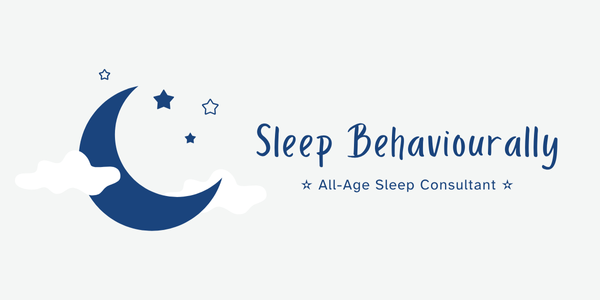Deciding when to start sleep training is a significant milestone for many parents. It’s a question that often comes with a mix of anticipation and anxiety. You’re likely sleep-deprived and looking for a solution, but you also want to do what’s best for your baby’s development and emotional well-being. The good news is that there is a general consensus among experts about the ideal window to begin this journey. This article will guide you through the key considerations, developmental milestones, and expert recommendations to help you determine the best age to start sleep training your baby.
Understanding the Basics of Sleep Training
Before diving into the specifics of timing, it’s important to understand what sleep training entails. Sleep training is the process of helping your baby learn to fall asleep independently and self-soothe when they wake up during the night. It’s not about letting your baby cry indefinitely, but rather about establishing healthy sleep habits that will benefit both you and your child in the long run. There are various methods, from gentle approaches to more structured ones, and the right choice often depends on your baby’s temperament and your family’s preferences.
The Golden Window: 4 to 6 Months
Most pediatricians and sleep consultants agree that the best time to start sleep training is between 4 and 6 months of age. This is often referred to as the “golden window” for several key reasons:
- Development of Circadian Rhythm: By 4 months, most babies have developed a more regular sleep-wake cycle, known as the circadian rhythm. This means they are starting to consolidate their sleep into longer stretches at night.
- Ability to Self-Soothe: Around this age, babies begin to develop the ability to self-soothe, which is a crucial skill for independent sleep. They might suck on their hands or find other ways to comfort themselves.
- Reduced Need for Night Feedings: While some babies may still need a night feeding at this age, many are capable of sleeping for longer stretches without needing to eat. It’s always best to consult with your pediatrician to ensure your baby is getting enough calories during the day.
Signs Your Baby is Ready for Sleep Training
Every baby is different, so it’s important to look for signs of readiness rather than just focusing on a specific age. Here are some indicators that your baby might be ready for sleep training:
- Consistent Sleep Cycles: Your baby is starting to have more predictable sleep patterns, with regular naps and a more consistent bedtime.
- Longer Stretches of Sleep: You may notice that your baby is naturally sleeping for longer periods at night, even if they still wake up.
- Self-Soothing Behaviors: You observe your baby trying to comfort themselves by sucking on their fingers or a pacifier.
- Weight Gain: Your baby is gaining weight steadily and your pediatrician has confirmed that they don’t need to be fed as frequently during the night.
What About Younger or Older Babies?
While the 4-to-6-month window is ideal, you might be wondering about sleep training a younger or older baby.
- Newborns (0-3 months): It’s generally not recommended to sleep train a newborn. Their sleep patterns are irregular, and they need to eat frequently. However, you can start laying a foundation for healthy sleep habits by establishing a consistent bedtime routine and putting your baby to bed drowsy but awake.
- Older Babies (7 months and beyond): You can still successfully sleep train an older baby. The process might be a bit more challenging as they have had more time to get used to their current sleep habits, but it’s definitely achievable. Consistency and patience are key.
Choosing the Right Sleep Training Method
There are many different sleep training methods to choose from, and what works for one family may not work for another. Some popular methods include:
- Cry It Out (Extinction): This involves putting your baby to bed and not returning until the morning.
- The Ferber Method (Graduated Extinction): This method involves checking on your baby at progressively longer intervals.
- The Chair Method: This involves sitting in a chair next to your baby’s crib and gradually moving the chair further away each night.
- The Fading Method: This involves gradually reducing your role in helping your baby fall asleep.
The Importance of Consistency
Regardless of the method you choose, consistency is the most important factor in successful sleep training. It’s crucial that you and your partner are on the same page and follow the plan consistently. It can take a few days to a few weeks for your baby to adjust to the new routine, so be patient and don’t give up.
When to Seek Professional Help
If you’ve been trying to sleep train your baby for a few weeks and aren’t seeing any progress, or if you’re feeling overwhelmed and unsure of where to start, it may be time to seek professional help. A sleep consultant can provide you with a personalized sleep plan and support you through the process.
At sleepbehaviourally.com, we understand that every family is unique. We offer personalized sleep consultations to help you and your baby get the rest you need. Contact us today to learn more about how we can help you on your journey to better sleep.
Common Challenges and How to Overcome Them
Sleep training isn’t always a smooth process, and it’s important to be prepared for potential challenges. Understanding these common obstacles can help you stay committed to your plan and find solutions when difficulties arise.
Sleep Regressions: Just when you think you’ve mastered sleep training, your baby might experience a sleep regression. These temporary setbacks often occur around 4 months, 8-10 months, and 18 months, coinciding with major developmental milestones. During these periods, your baby’s sleep patterns may become disrupted as their brain processes new skills. The key is to maintain consistency with your sleep routine while being patient as your baby works through this developmental phase.
Illness and Teething: When your baby is unwell or teething, their sleep patterns will naturally be disrupted. During these times, it’s okay to provide extra comfort and temporarily adjust your sleep training approach. Once your baby is feeling better, you can gradually return to your established routine. Most babies will quickly fall back into their good sleep habits once they’re healthy again.
Travel and Schedule Changes: Maintaining sleep training consistency can be challenging when traveling or during schedule changes. Try to stick to your baby’s bedtime routine as much as possible, even in new environments. Bring familiar items like their sleep sack or favorite stuffed animal to help them feel secure in unfamiliar surroundings.
The Science Behind Sleep Training
Understanding the science behind sleep training can help you feel more confident in your approach. Research has consistently shown that sleep training is not only safe but beneficial for both babies and parents. Studies have found that babies who undergo sleep training show no signs of increased stress hormones or attachment issues. In fact, well-rested babies tend to be happier, more alert during wake times, and show better emotional regulation.
The development of healthy sleep patterns is crucial for your baby’s physical and cognitive development. During sleep, important processes occur including memory consolidation, growth hormone release, and brain development. When babies learn to sleep independently, they’re developing important self-regulation skills that will serve them well throughout their lives.
Creating the Ideal Sleep Environment
The environment in which your baby sleeps plays a crucial role in the success of sleep training. Here are key elements to consider when setting up your baby’s sleep space:
Room Temperature: Keep the nursery at a comfortable temperature between 68-70°F (20-21°C). A room that’s too hot or too cold can disrupt sleep and make it harder for your baby to settle.
Lighting: Use blackout curtains or shades to create a dark environment that promotes the production of melatonin, the hormone that regulates sleep. During daytime naps, some parents prefer to keep the room slightly lighter to help establish the difference between day and night sleep.
Sound: Consider using white noise to mask household sounds that might wake your baby. The consistent sound can be soothing and help your baby stay asleep longer. Keep the volume at a safe level, similar to the sound of a shower running.
Safety: Ensure the crib meets current safety standards with a firm mattress and fitted sheet. Remove any loose bedding, pillows, or toys that could pose a suffocation risk. Follow safe sleep guidelines by placing your baby on their back to sleep.
Establishing a Bedtime Routine
A consistent bedtime routine is one of the most important foundations for successful sleep training. This routine signals to your baby that it’s time to wind down and prepare for sleep. Start your routine 30-60 minutes before you want your baby to be asleep.
A typical bedtime routine might include a warm bath, gentle massage, feeding, reading a short book, and singing a lullaby. The specific activities matter less than the consistency and calm atmosphere you create. Keep the routine relatively short and avoid overstimulating activities that might make it harder for your baby to settle.
Addressing Common Concerns About Sleep Training
Many parents have concerns about sleep training, and it’s important to address these worries with factual information.
“Will sleep training harm my baby emotionally?” Research has consistently shown that sleep training does not cause emotional harm or damage the parent-child bond. In fact, well-rested babies and parents often have more positive interactions during wake times.
“Is it normal for my baby to cry during sleep training?” Some crying is normal and expected during sleep training as your baby learns new skills. However, this doesn’t mean you’re causing distress. You’re teaching your baby an important life skill, and the temporary discomfort leads to long-term benefits for the whole family.
“What if my baby has special needs or was premature?” Babies with special needs or those who were born prematurely may need modified approaches to sleep training. It’s essential to work closely with your pediatrician to develop a plan that’s appropriate for your baby’s specific situation.
The Role of Daytime Sleep in Night Training
Don’t overlook the importance of daytime naps when implementing sleep training. Overtired babies actually have a harder time falling asleep and staying asleep at night. Ensuring your baby gets adequate daytime sleep will support your nighttime sleep training efforts.
Most babies in the 4-6 month age range need 3-4 naps per day, with total daytime sleep ranging from 3-5 hours. As your baby gets older, the number of naps will decrease, but the importance of daytime rest remains crucial for nighttime success.
Nutrition and Sleep Training
Your baby’s feeding schedule plays an important role in sleep training success. By 4-6 months, many babies can go longer stretches without eating, but it’s important to ensure they’re getting enough calories during the day.
Work with your pediatrician to determine if your baby is ready to eliminate night feedings. Some babies may still need one night feeding even after sleep training begins, and that’s perfectly normal. The goal is to reduce unnecessary night wakings while ensuring your baby’s nutritional needs are met.
When Sleep Training Isn’t Working
If you’ve been consistently following a sleep training plan for 2-3 weeks without seeing improvement, it may be time to reassess your approach. Consider whether:
- Your baby might not be developmentally ready yet
- The method you’ve chosen isn’t the right fit for your baby’s temperament
- There are underlying issues like reflux or allergies affecting sleep
- Your consistency might need improvement
- External factors are interfering with the process
Don’t be discouraged if your first attempt doesn’t work perfectly. Many families need to try different approaches or timing before finding what works best for their situation.
The Long-Term Benefits of Sleep Training
The benefits of successful sleep training extend far beyond the immediate relief of better nights. Children who learn healthy sleep habits early often maintain better sleep patterns throughout childhood. They tend to have better emotional regulation, improved attention spans, and stronger immune systems.
For parents, the benefits are equally significant. Better sleep leads to improved mental health, better decision-making, and more patience for parenting challenges. The whole family functions better when everyone is well-rested.
Supporting Your Partner Through Sleep Training
Sleep training is most successful when both parents are committed to the plan. It’s important to discuss your approach beforehand and agree on how you’ll handle different situations. Decide who will handle night wakings and stick to your plan consistently.
If one parent is more hesitant about sleep training, take time to discuss concerns and research together. Sometimes it helps to start with gentler methods and gradually work toward more structured approaches as comfort levels increase.
Maintaining Sleep Success
Once your baby has learned to sleep independently, maintaining these good habits requires ongoing attention. Consistency remains key, even after the initial training period. Continue with your bedtime routine, maintain appropriate sleep environments, and be prepared to make adjustments as your baby grows and develops.
Remember that sleep needs change as children grow. What works at 6 months may need adjustment at 12 months or 2 years. Stay flexible while maintaining the core principles of healthy sleep habits.
Final Thoughts
Sleep training is one of the most valuable gifts you can give your baby and your family. While the process requires patience and consistency, the long-term benefits make the effort worthwhile. Remember that every baby is unique, and what works for one family may not work for another.
Trust your instincts, stay consistent with your chosen approach, and don’t hesitate to seek professional help if you need support. At sleepbehaviourally.com, we’re here to guide you through every step of your sleep training journey, providing personalized solutions that work for your family’s unique needs.
The journey to better sleep starts with understanding when your baby is ready and choosing an approach that aligns with your family’s values and your baby’s temperament. With the right timing, method, and support, you can help your baby develop the healthy sleep habits that will benefit them for years to come.





0 Comments